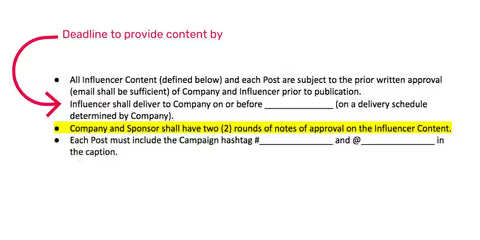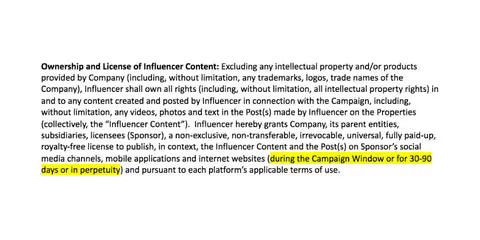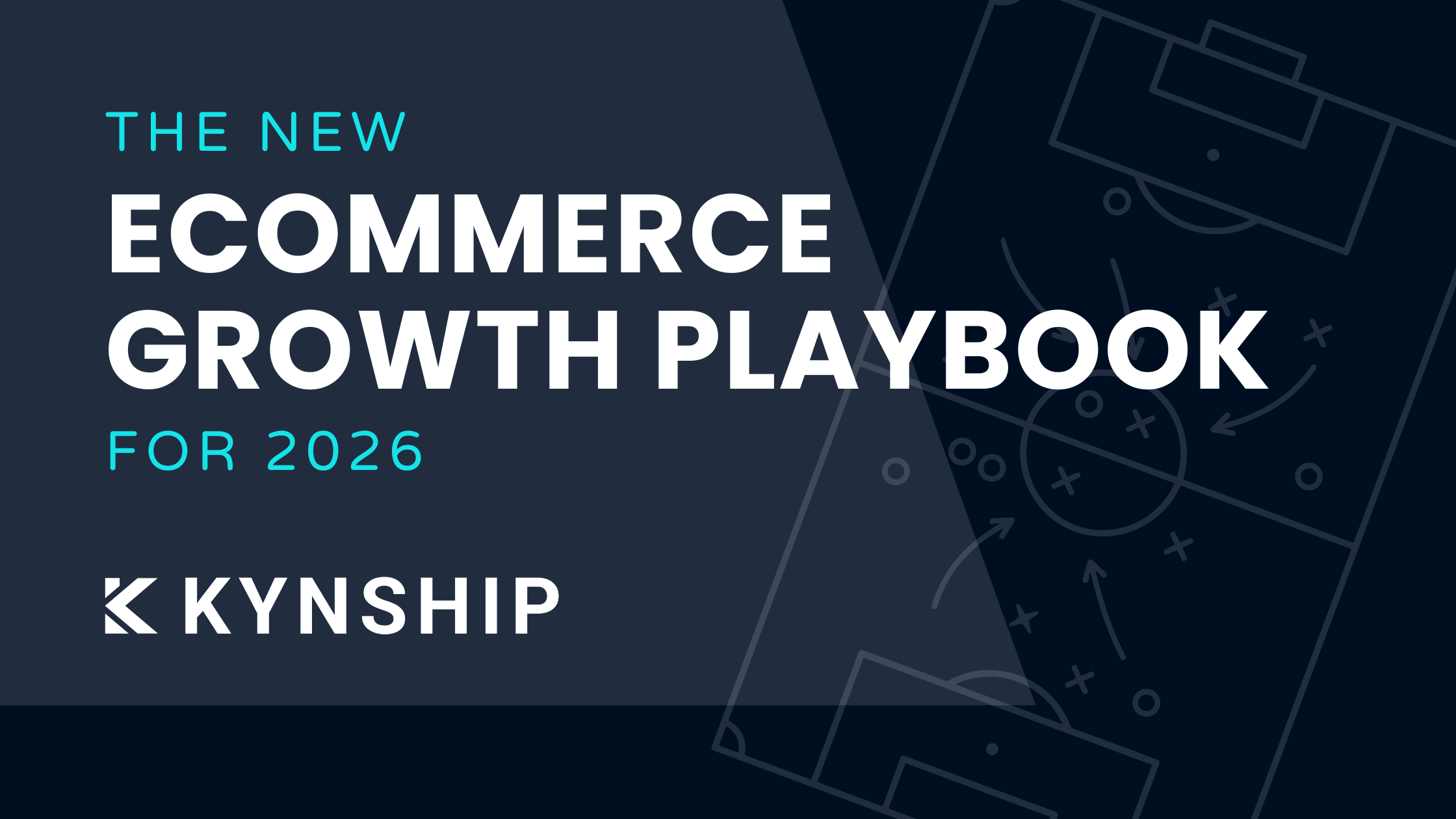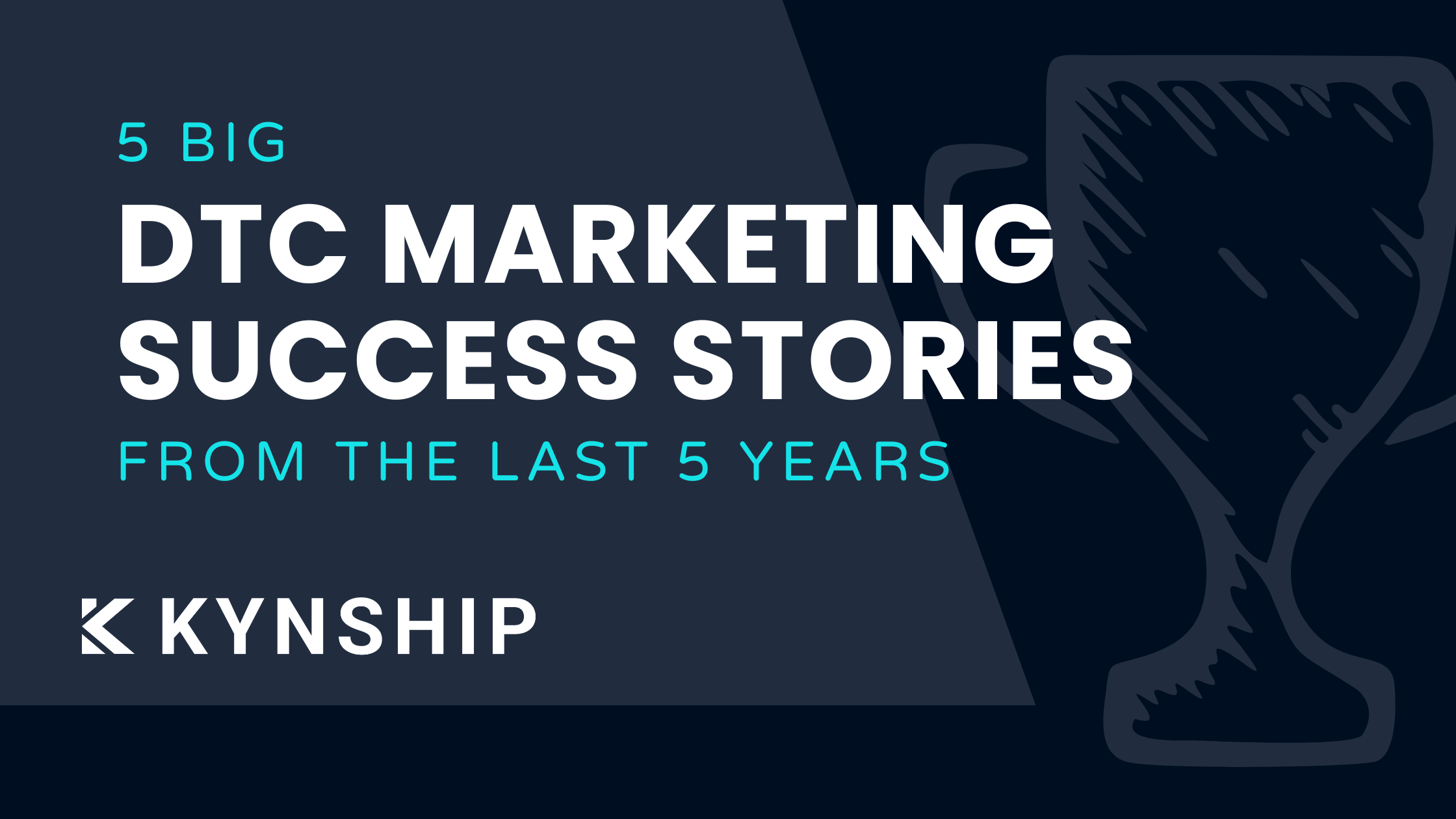Influencer Rates in 2023: Understanding the Costs & How To Negotiate Pricing

Understanding how much you should pay an influencer can be challenging due to the lack of standardization of influencer rates and the varying factors involved in how influencers work out their pricing.
Here's what you're up against:
But don't worry, this guide provides you with the latest average influencer pricing costs, a clear framework for determining influencer rates, and some pricing strategies you can use to get the most out of your influencer marketing budget.
Four Factors That Determine Influencer Rates
Influencer rates can vary significantly, with several factors influencing the final cost. Here are four critical aspects to consider:
1. Size & Engagement (Or Tier): The size and engagement level of an influencer plays a crucial role in determining their rates. Influencers can be categorized into different tiers based on their following and influence (think: micro vs macro). It's important to recognize the tier an influencer belongs to, as it directly affects their reach, engagement, and pricing.
2. Deliverables: Deliverables are the influencer-generated content you expect from the influencer. It’s not difficult to see how the type of content affects the average price of an influencer. Making an Instagram video isn’t the same as conducting a giveaway. Be realistic with the time and effort required from the influencer and pay them accordingly. The type and complexity of deliverables expected from influencers greatly influence their rates.
3. Usage Rights: If you’re planning to repurpose some influencer content for your own marketing channels, you need to discuss it ahead of time and outline it in the influencer contract. You may think you don’t need this, but every influencer marketing strategy should have usage rights. Why?
Social media influencers are professional content creators. Their primary skill set involves creating thumb-stopping content that converts. Missing out on reusing some of their high-quality content is saying goodbye to a massive chunk of your return on investment from an influencer marketing campaign.
The standard marketing usage rights consist of a 30-90 day window, and that’s plenty of time to utilize influencer content for your own social media marketing.
4. Length of Term: Is the influencer posting just once? Or is the influencer working with you for a period of time, say three, six, or 12 months, with certain deliverables for each month?
The longer the duration of the contract, the higher the influencer rates. But you can also expect to ask for a discount if you enter into a long-term partnership with a social media influencer. You may want to consider building the foundations of your brand ambassador program.
Our influencer rates can vary based on factors such as the content quality, engagement rates, and the influencer's niche or expertise. We also negotiate rates with each influencer on a case-by-case basis, so these numbers may not be exact for every influencer we work with. — Devon Ferguson, Senior Editor of Carnivore Style
These are the big four determinants of costs associated with social media influencers. But influencer pricing isn’t limited to these factors alone.
For instance, do you expect an influencer not to work with other competing brands? Demanding exclusivity in your contract means you’ll be paying extra for influencer partnerships — since signing a non-compete agreement means asking an influencer to give up on potential income.
Similarly, the price tag is also dependent on the social media platform. The rates differ widely from Instagram influencers with a niche audience to mega influencers on Youtube.
With that said, let’s get our hands dirty with some average influencer earnings and how that might affect influencer pricing.
Influencer Rates in 2023
Here's a summary of the latest influencer pricing averages according to Izea's 2023 State of Influencer Earnings report. Overall, these pricing averages highlight the evolving landscape of influencer marketing, where platforms, follower counts, and usage rights all play significant roles in determining the costs associated with influencer collaborations.
Average cost paid per post per platform
From Instagram influencers to Youtube Influencers, this is how much you can expect to pay for a single post on one platform for influencers based on all follower counts.
- Facebook: $642
- Instagram photo: $1311
- Pinterest: $1450
- Twitter: $1643
- Youtube: $2102
- TikTok: $2741
- Instagram Story: $2784
- Twitch: $4373
Takeaway:
Platform Pricing Variations: The pricing for influencer posts varies significantly across different platforms. Twitch and Instagram Stories have the highest average costs per post, indicating their effectiveness in reaching audiences. TikTok and YouTube also command relatively high prices, while Facebook and Pinterest have lower average costs per post. Marketers value the engagement and reach potential of certain platforms over others.
Average cost paid per post per platform combo
This is the average influencer pricing for a single post on each platform for influencers of all follower sizes. Looks like Youtube influencers are killing it.
- Facebook + Blog: $1735
- IG story + IG photo: $2784
- FB + IG photo: $3101
- FB + IG story + IG photo: $3737
- IG story + tiktok: $6444
- IG story + Youtube: $12,007
Takeaway:
YouTube Dominance: YouTube influencers stand out in terms of pricing, with the highest average cost per post across all follower counts. This suggests that YouTube remains a powerful platform for influencer marketing, offering substantial value and reach for brands. Marketers are willing to invest more in YouTube collaborations, potentially due to the platform's video-centric nature and engaged audience.
Platform Combinations: Influencer campaigns that involve multiple platforms can significantly impact pricing. Collaborations between Instagram and Facebook show relatively higher costs, likely due to the complementary nature of the two platforms and the potential for cross-promotion. Combining Instagram Stories with other platforms, such as TikTok or YouTube, results in notably higher prices, indicating the value of incorporating multiple channels to maximize reach and engagement.
Average influencer pricing based on follower count
- Nano influencer (1000-9999): $1105
- Micro-influencers (10,000-49,999): $1674
- Mid-tier (50k-199,999): $3396
- Macro-influencers (200k - 499,999): $4992
- Mega-influencers 500k-999,999: $5,497
- Web celebrity influencers (1mill): $5865
Takeaway:
Follower Count Impact: The pricing structure varies based on the influencer's follower count. As the follower count increases, so does the average cost per post. This demonstrates that influencers with larger audiences command higher prices, as they can potentially reach more people and have a stronger influence over their followers' purchasing decisions. However, partnering with influencers with larger followings may not always be the right way to maximise your influencer marketing ROI. If you can afford to do both, go ahead! If not, consider a micro influencer marketing strategy instead.
Additional Cost: Usage Rights
Don't forget to factor the usage rights bump into your influencer marketing budget. You can expect to add the following amount as extra to what you were already paying different tier influencers and deliverables:
Usage rights (30-90 days) Additional Costs
- Micro: $50 - $150
- Mid-tier: $100-$500
- Macro: $500-$1000
- Celebrity: $2500-$5000
Takeaway:
Usage Rights: Usage rights add an additional cost to influencer collaborations. The pricing range for usage rights varies based on influencer tiers. Micro-influencers typically have lower additional costs, while mid-tier, macro, and celebrity influencers command higher fees. This reflects the perceived value of the influencer's content and the potential for wider distribution and prolonged usage by the brand.
Influencer Rates Formula
Tier + Deliverables + Usage Rights (+ Length of Term) = $Money You’d Be Paying.
For example:
Tier: Mega-influencers (500k-999,999)
Deliverables: Facebook + Instagram Story + Instagram Photo
Usage Rights: Macro ($500-$1000) Length of Term: 60 days
Formula: Mega-influencers + (FB + IG story + IG photo) + Macro + (60 days) = $Money You'd Be Paying
Plugging in the values:
$5497 + $3737 + $500 + $60 = $13,794
So, in this example, for a Mega-influencer delivering a post on Facebook, Instagram Story, and Instagram Photo, with Macro usage rights for 60 days, the total amount you would pay would be $13,794.
The rule is that the longer you work with an influencer, the higher a discount you can probably negotiate.
When you reach out to an influencer, the media kit is their standard pricing. But does this mean they won’t go lower or higher to form a partnership with your brand? Absolutely not.
Effective Influencer Pricing Negotiation Strategies
Brands often make negotiation mistakes that not only cost them their influencer marketing budget but also lose thousands of dollars worth of return on investment.
Here are a few influencer marketing mistakes causing your brand big bucks:
#1: Use Product Seeing Instead of Solely Relying on Pay-For-Post
If you only use the pay-per-post model with influencers, you will only ever build transactional relationships. It’s impersonal, lacks authenticity, and forms the influencer partnership based on asking instead of giving.
So, what can you do instead? Generate free content. How? Through product seeding — or sending free products to relevant influencers in your industry with no strings attached.
This will help you generate non-hashtag-ad posts and create content from influencers at no cost.
Our primary influencer strategy was no-strings attached gifting. We would DM hundreds of micro influencers, and ship product to 200 new influencers each month (putting them on a 3 month subscription) 20-30% of those folks would post something.
We would see who posted really good stuff. And if we felt like it was high enough quality for us to use in our UGC ads, we would reach back out to them to strike a deal.
The deal would be different for each influencer, depending on their audience size and the quality of the content. But it would range anywhere between $200 - $2000 dollars. And we would ask them to do an IG feed post + however many IG stories they were comfortable with (some only did 1, some did 2-3 and we would compensate based on the volume)
In exchange, we secured rights to repurpose their content in our marketing campaigns, leveraging it for Meta ads, testimonials, and emails, significantly boosting our brand's visibility and reach." — Chief Revenue Officer, Pregnancy Subscription Box Business
Read more: Best Practice Guide to Product Seeding
The best part? The influencers will also be genuine product adopters rather than social media influencers paid to talk positively about your brand.
But what do you do with all the influencer marketing spend budget allotted to pay per post model? Reassign it to ad spend via influencer whitelisting — the process where an influencer permits your brand to handle their social media accounts and run ads from them.
How is influencer whitelisting more lucrative than pay-per-post? Influencer-sponsored ads remove the dependency on social media algorithms by offering you complete control over the distribution through paid media.
Don’t believe us? Calculate influencer marketing ROI from your influencer whitelisting efforts through the following formula:
CPM (Cost Per 1000 impressions) / 1000 (Impressions) = X (Ad Spend Budget) / Influencer Audience Size
It does not matter whether your partnership is with micro-influencers or celebrity influencers — this formula will help you project the ad spend required to make the most out of your influencer marketing strategy.
A Growth Advisor for an esports start-up said influencers and streamers hold a significant way in the industry. He said their startup took a three-pronged approach to tap into this power:
1. Partnering with a top-tier Twitch streamer
With big-name streamers, they couldn't compete with the likes of Samsung in cash compensation, so they offered equity partnerships and a nominal cash incentive.
This led to successful partnerships with popular League of Legends streamers who agreed to use our product exclusively during their streams.
2. Collaborating with mid-sized YouTube content creators
They applied a similar strategy with mid-level Youtube influencer.
We had to think creatively as these influencers often used our offers to get higher bids from larger companies. Thus, we shifted our focus to the European and Latin American markets, paying influencers approximately $2-2.5k for 2-3 video inclusions. This delivered double the traffic at a fraction of the cost and proved extremely effective.
3. Engaging with a large volume of smaller YouTubers
Lastly, they launched a partner program, enlisting 500 smaller YouTube channels as affiliates.
Despite these affiliates receiving a 10% cut from every customer they referred, the returns from this strategy were limited.
#2: Respect the Influencers Time & Show You Mean Business
It’s essential to be clear and upfront with social media influencers. Respect their time and move as quickly as possible.
Take the example below from our template outreach email to show you mean business.
.avif)
If you’re offering a prospective influencer a free product for a one-off deal or forming an influencer partnership with a micro-influencer, start with a free product and include it in the initial outreach email. Go from there if an influencer or their agent responds with pricing.
#3: Create a Thorough Influencer Contract
A contract in influencer partnerships is non-negotiable. Even if you’re opting for the free-product-for-post model, you need protection.
But a bigger mistake is not making a thorough contract — including everything from the type of content to marketing goals.
Here are some things you should never fail to include in your influencer contract:
- FTC Guidelines: These parameters are important for both your brand and the influencer. Usually, FTC guidelines are included in the contract as an addendum.
- Approval rights: You need the ability to approve the content before an influencer publishes it in partnership with your brand. Make this explicit — simply aligning on messaging and script isn’t enough. Here’s how you can imbibe approval rights into your contract:

- Usage rights: Usage rights require an extra fee, but they’re worth repurposing across your social media, website, email, ads, etc. But make ownership and timelines clear in your contract. This is what it looks like in action:

- Exclusivity: If you want to prohibit the influencer from partnering with competing brands for a certain period of time, you need to add an exclusivity clause in your contract. The standard is a one-week buffer period before and after the influencer marketing campaign. The campaign window should be three or four weeks minimum.

And bingo! Now you have the best deal on your hands without compromising on protection.
Navigating The Wild West: Influencer Pricing
Navigating the influencer marketing industry and rates can be complex, especially when the guidelines are not always clear. But with a strategic approach, you can optimize your influencer marketing budget and establish mutually beneficial partnerships. By considering factors such as influencer tier, deliverables, usage rights, and contract length, you can determine fair rates that align with your goals and budget.
Remember, negotiation and open communication are key to building successful influencer relationships. Stay informed about industry trends and continually adapt your influencer marketing strategies for maximum success.


5 DTC Marketing Success Stories From The Last 5 Years
Five real DTC marketing success stories from the last five years, breaking down how brands scaled despite rising CAC, creative fatigue, and tougher competition, plus key lessons you can apply today.

The New Ecommerce Growth Playbook For 2026
These are the ecommerce growth marketing strategies we are using right now to successfully scale DTC brands from $2M to $50M.
Bi-weekly tips to reduce your CAC
Join thousands of DTC operators and subscribe to Cut the CAC for insights from the Bottom Line Podcast and Kynship's growth strategies.


.avif)
.avif)
.avif)



